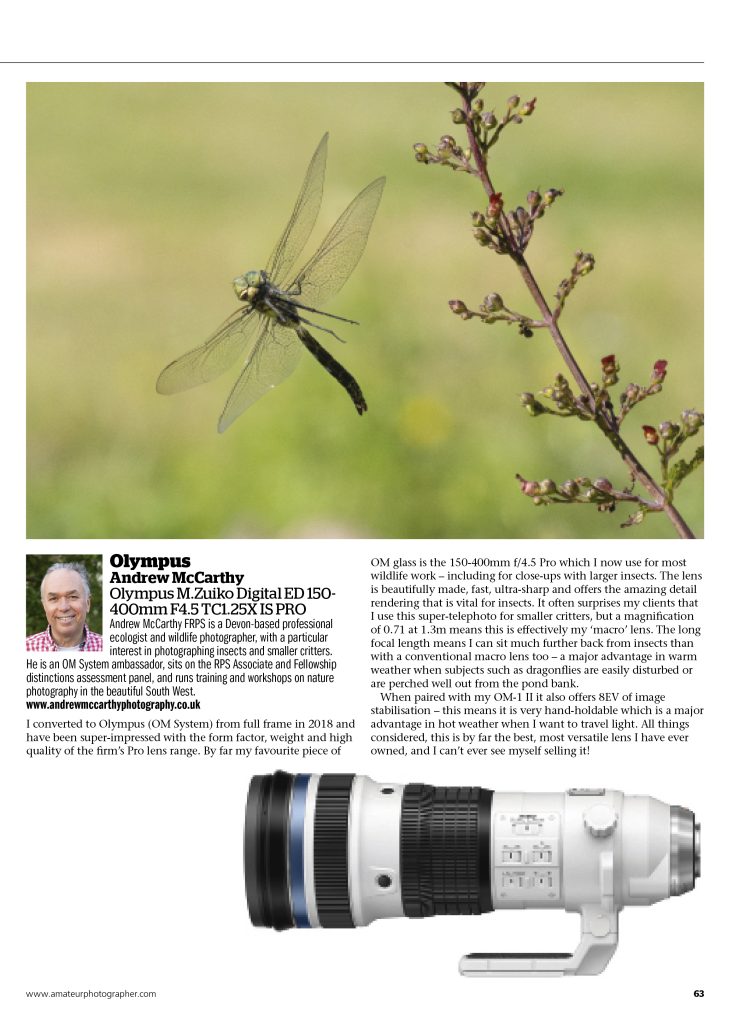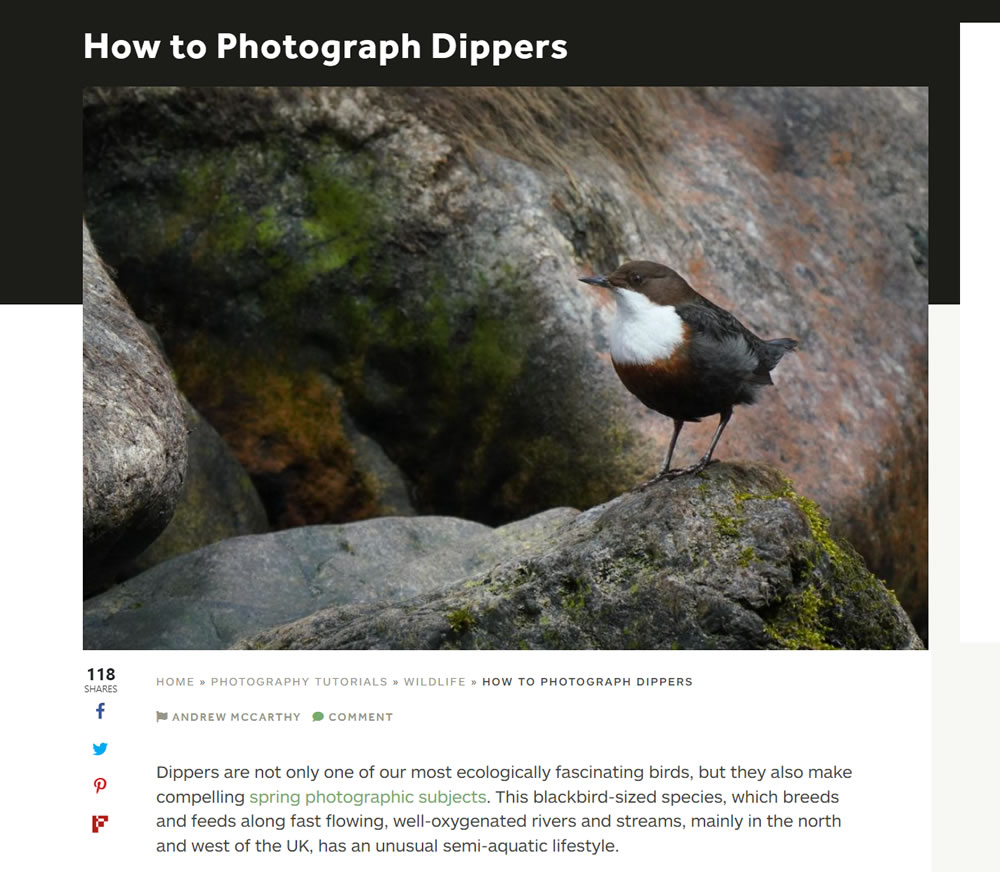The Power of Projects – Publication in Outdoor Photographer
I was recently featured in Outdoor Photographer magazine. Read my article ‘The power of projects’ below.
The Power of Projects – Publication in Outdoor Photographer Read More »
I was recently featured in Outdoor Photographer magazine. Read my article ‘The power of projects’ below.
The Power of Projects – Publication in Outdoor Photographer Read More »
I was recently featured in the Pro’s Favourite section of Amateur Photographer Magazine. Please have a look through the article below.

Pro’s Favourite – Article in Amateur Photographer Magazine Read More »
I have another printed article in the excellent Outdoor Photography magazine – this time it’s a six-page ‘how to’ on dragonflies. You can read the full article here:
Photographing dragonflies Read More »
I am very pleased to announce a new print article on insect photography was published earlier this spring in that excellent magazine Outdoor Photography. You can read the full article here:
Photographing insects in spring Read More »
I was incredibly honoured recently to have been asked to join the Royal Photographic Society’s distinctions process as an assessor on the Natural History panel for Associate and Fellowship distinctions.
I have now been through the induction / training process, and am very much looking forward to getting properly involved with my fellow panel members during the next set of assessment sessions in the autumn.Â
I never cease to be amazed at just how much thought, effort and passion applicants put into their submissions, so being a member of this panel is not only prestigious for me, but it’s a big responsibility too. Cant wait for the next session!
New role for the Royal Photographic Society Read More »
Following a successful application to the Royal Photographic Society in October 2022 for my Natural History Fellowship, I have written about my distinction journey in this months’ copy of The Iris – the (excellent) journal of the RPS Nature Group and have recently been invited to join the RPS Associate/Fellowship judging panel, which is a massive honour. If you are not already a member of the RPS I highly recommend their distinction route as an superb way of improving your photography. Do check out my Iris article here:
Publication in The Iris – Journal of the RPS Nature Group Read More »
I am very pleased to announce a new on-line article of mine entitle How to Photograph Dippers was published recently on the excellent Nature TTL website – do check it out at https://www.naturettl.com/how-to-photograph-dippers/

How to Photograph Dippers on Nature TTL Read More »
I am very pleased to announce a new on-line article on my UK bat photography experience was published recently on the excellent Nature TTL website – do check it out at https://www.naturettl.com/photographing-bats-in-flight/

Bats in Flight Article on Nature TTL Read More »
‘Summer still seems a long way off at the moment, but I am now starting to set up dates for spring 1:1s and workshops on insects. In the meantime here is a downloadable pdf article which was recently published – in issue 275 of the excellent Outdoor Photography magazine.
Click here to download the full article as a PDF.

A Moment with Nature – Outdoor Photographer Read More »
We are now nearly mid-way through January and it will only be another few weeks before the dippers on my local stretch of the River Teign begin to start pairing up and holding territory again, in preparation for the new breeding season.
I will be running 1:1 workshops with these lovely birds again in 2022, but in the meantime here is an article I had published in Outdoor Photographer magazine in mid-2021.
Click here to download the full article as a PDF.

Dippers On Dartmoor Read More »